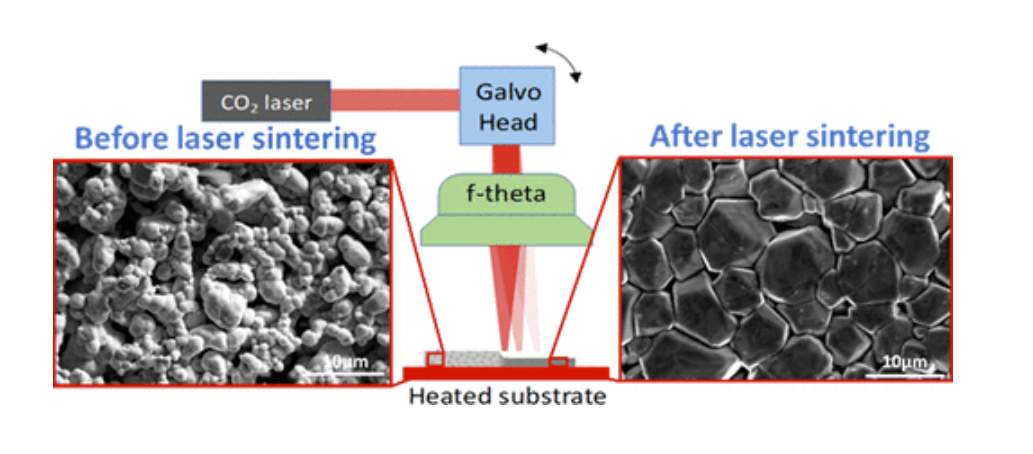
研究小组设计了一种全固态锂金属电池的制造方法,这种电池被认为是安全和高能量密度电源的未来选择。
研究小组发现,通过使用二氧化碳(CO2)烧结固体电解质膜(不将其熔化至液化点,通过加热和加压压缩固体物质而形成)克服了固态电池制造中的常见问题。
这种激光烧结技术提供了可扩展、低成本和高能量密度的固态锂(Li)电池,可以提高国家安全任务中的储能需求。该激光技术还可以应用于其他领域,如聚合物、陶瓷和金属的积层造形。
与传统的炉内烧结和最近开发的放电等离子烧结、热压和快速焦耳加热不同,新型激光烧结方法至少具有以下的三个特点,一是通过超高速烧结降低了Li损失;二是显著降低薄膜厚度的独特各向异性收缩行为;三是点扫描策略的波状表面拓扑(与电极材料的三维界面接触)。

The processing of garnet-type solid-state electrolytes remains challenging as densification conventionally requires high sintering temperatures and long processing times, which can result in severe Li loss, the formation of secondary phases, and thus high porosity and low ionic conductivity. Here, we report an ultrafast sintering method based on CO2 laser scanning with the assistance of a heating stage. We demonstrate the rapid densification of low-
